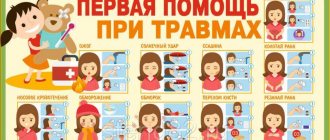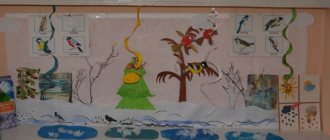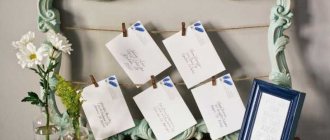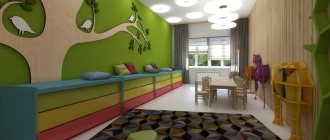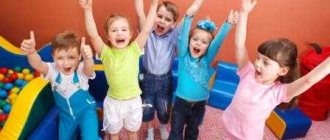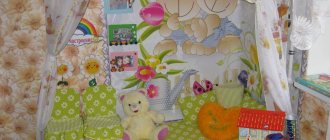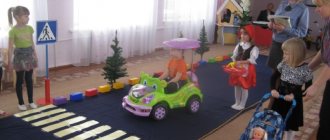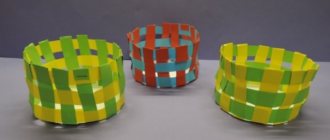Country, Motherland, Fatherland... As soon as you hear these words, you immediately imagine images close to us since childhood: home, mother, father, Russia.
Instilling a sense of patriotism in preschoolers is a complex and lengthy task. Love for family, loved ones, kindergarten, and country is of great importance in the development of a full-fledged future citizen. No matter what country a child grows up in, he connects all his feelings with the places where he was born and raised: with the kindergarten where he went as a child, with the school where he learned the basics of knowledge, with his yard and street.
To cultivate a sense of love for the Motherland, for their hometown, educators together with parents can decorate patriotic corners in kindergarten with their own hands.
The importance of patriotic education
The fate of Russia directly depends on what qualities will be developed in children, who determine the future of our country. What this future will be like depends to a large extent on us and on the concepts that will be embedded in the minds of children.
The first years of a child’s life are the most important stage in the upbringing and development of a future citizen and person. At this age, those feelings and character traits of a child are formed that, from birth, connect him with his family, people, country and determine his future path in life.
Cultivating patriotic feelings is a long process that is based on the language, songs, and music of the Russian people. In preschool age, it is very important to saturate the child’s soul with the concept of honor and human values.
Tasks of a teacher in the development of patriotism
A preschooler's love for his country begins with love for his relatives - mother, father, grandfather, grandmother, his home. Patriotic corners in kindergarten help to generate and develop this feeling.
The main directions of work of a teacher in patriotic education:
- to cultivate a tolerant attitude towards other nations and people of different nationalities;
- to form a child’s spiritual and moral attitude towards family, country, and the nature of his native land;
- to instill a sense of self-esteem in a preschooler.
The development of feelings of patriotism and citizenship in preschoolers can only be successful if the kindergarten teacher knows well the history of his city, country and is able to convey this knowledge to the child.
The continuity of generations
Starting from kindergarten, the topic of patriotism should be present in education. If in the elementary grades a student likes to complete the patriotic craft assignment for school, it means that the child is developing in the right direction.
He grows into a citizen of the country. When many people, especially young, proactive people, feel a sense of belonging to each other throughout the vast expanse of the country, good things will be done, with pure thoughts.
Here is a craft - the Eternal Flame - as a symbol of the continuity of the glorious pages of history. With a live fire made of colored paper. Decorated with a green grass border on the sides. As a reminder that we must cherish the covenants of our ancestors. Take care of your homeland.
Main attributes
Properly designed patriotic corners in kindergarten will attract children’s attention to studying their country, will provide an opportunity to select material based on the children’s interests, and will allow teachers to work together with children and their parents.
Materials placed in the corner should cover the main directions of patriotic education and may include the following areas: “My family”, “My native land”, “Folk rituals and crafts”, “Moscow is the capital of Russia”, “Who are the defenders of the Fatherland ? and etc.
The main attributes that patriotic corners in kindergarten should contain:
- A photo or portrait of the President of Russia is placed either in the center of the corner or on the left.
- The anthem is a symbol of our country and is a musical and poetic work. Usually presented as a text version and posted on a stand, there should also be a musical version for listening.
- The coat of arms is a state symbol, it is a quadrangular shield, it depicts a crowned double-headed eagle holding an orb and a scepter in its paws. On the eagle's chest is an image of St. George the Victorious killing a serpent.
- The flag of Russia is a piece of fabric that has a rectangular shape and consists of three stripes of different colors: white - means purity and peace; blue is a symbol of constancy and faith; red – energy, strength and blood that was shed in the struggle for the Motherland. In the corner, the flag can be presented in the form of a large-sized canvas mounted on the wall, or as a small-sized flag standing on a stand.
Diversity of approaches to the problem
Most often, military-patriotic crafts do not require much material consumption. To make it you need to have:
- scissors;
- cardboard and paper;
- pencil;
- paints;
- glue.
Using all this, with skillful handling of the material, you can even create crafts that can be sent to an exhibition.
But the patriotic theme is broader than just a military theme. There is a wide field for creativity here. Here, for example, is a model of the Motherland monument. This is difficult for a child to do. But for a high school student, if he sculpts and draws well, this is a feasible task.
Make a model from plaster. And if it works out, parents can be proud of such a son or daughter. Even though gypsum is a soft material, not everyone can create a miniature sculpture from it.
Corner of patriotic education in the younger group
Children who have just come to kindergarten do not yet understand the meaning of words such as people, country, culture. The homeland, in their understanding, is their loved ones, their parents, so they should receive all the necessary information in a special corner.
The design of patriotic corners in kindergarten should be done depending on the age of the children. In the younger group, the parents themselves can create such a corner, since they are also interested in raising a future citizen of their country.
It will be interesting for kids to look at the model of their small homeland in the corner - the city in which they were born, monuments, their kindergarten. Children will receive this information with pleasure. Educators can direct children's attention to nurturing love for their city, to protecting its monuments and architectural structures.
Selecting a location and main requirements
Corners in kindergarten are usually located according to thematic zones: physical education, book, creative, patriotic, and so on. In each age group, the appropriate arrangement of furniture and wall materials for each zone is thought out in accordance with the age of the children. The design of corners in kindergarten in each group must meet a number of general requirements. First of all, this is safety .
Our safety
This requirement implies that furniture, stands and visual aids located in the safety zone must be made of high-quality, environmentally friendly materials. Also, the safety of the design of this area includes: the stability of the furniture, well-fixed shelves and racks, the absence of sharp corners and chips.
The second requirement is accessibility. This area should be located in a place free for children to access, be clearly visible, and correspond to the height of the children. Safety zone materials must take into account the gender, age and individual capabilities of children.
The third requirement is aesthetic design. It is ensured through the beautiful design of stands, shelves, and the demonstration and teaching materials themselves. There should be no torn books or broken toys in this area. It is better to choose bright, saturated colors for decoration, but at the same time compatible with each other.
Another requirement is flexibility. It assumes the possibility of periodically updating materials in the security zone, introducing new details, interesting books, toys, and visual aids into its design.
A separate information stand “Safety Corner in Kindergarten” is set up in the preschool institution. Most often, it is located in the lobby so that parents of students can get acquainted with up-to-date and competent information at any time. Materials for the stand are developed jointly with employees of the State Traffic Inspectorate.
Features of working with children in the corner
Educators, when planning work on patriotic education, can divide the material into blocks: “My family”, “My favorite city”, “My homeland is Russia”.
Each topic is studied using conversations, didactic games, excursions, conversation games, and dramatization games. Work in the corner is carried out from the closest and most understandable for children (family, kindergarten) to the more complex (country, city).
After familiarization with the materials, sports festivals dedicated to the defenders of the Fatherland are held in the corner with children, Russian nursery rhymes, sayings, and proverbs are studied, and the need for folk music and fairy tales is brought up in children. The main goal of such classes is to develop in children an understanding of the beauty of the language, Russian nature, and a sense of pride in their Motherland.
Only constant and systematic joint work of preschool educational institutions workers and parents will allow preschoolers to develop a sense of patriotism, civic consciousness, and a tolerant attitude towards people of other nations and peoples. Proper design of patriotic corners in kindergarten will only help with this.
Options for a children's patriotic corner in kindergarten
Options for corners
The arrangement of objects and the organization of the patriotic corner can have several options depending on the age of the students. Patriotic corners in kindergarten for younger groups can be represented mainly by materials on getting to know the immediate environment. These are, first of all: folders, didactic games, illustrations on the topics “Adults”, “Family”, “The House You Live In”, “Child and His Peers”, “Emotions”, “Rules of Conduct in Public Places”. Also in the corner there are: models and photographs of a group, a preschool institution, a street; antiques, Russian folk toys, fiction for children.
material about family holidays and traditions is added to the territory of the middle group . In addition to the layout of the street and preschool educational institution, albums, postcards with the sights of the native city/village, famous citizens, representatives of the animal and plant world, transport, and architecture are added. In the middle group, elements of state and municipal symbols (flag and coat of arms), as well as folders with illustrations on the theme “Defenders of the Fatherland,” appear in the design of the corner. It would be advisable to set up a “Traffic Regulations Corner in Kindergarten” next to materials about the transport of your native land. This will allow us to approach solving educational problems in a comprehensive manner.
In older groups, corners can be represented by family photo albums, homemade books on the topics “Coat of Arms of My Family”, “Family Tree”. Thematic folders with illustrations about the history of the native land, industry, attractions, culture and education, and so on. In the corner there are all the symbols of the state and native land (anthem, flag, coat of arms, portraits of the president of the country, mayor of the city); maps of the Russian Federation and the region, adapted for children. Material about Orthodoxy is introduced.
It is also advisable to place a traffic rules corner in a kindergarten for older preschoolers close to the patriotic corner. It includes children's drawings on road safety, individual illustrations or photographs with types of traffic lights and crossings, and traffic signs. This may include photographs from the streets of your hometown.
Thus, when designing a patriotic corner in a preschool group, the main thing is to take into account the age-related capabilities of children and the tasks that must be solved at this age. We should also not forget about the mandatory safety, accessibility and aesthetics of materials.
